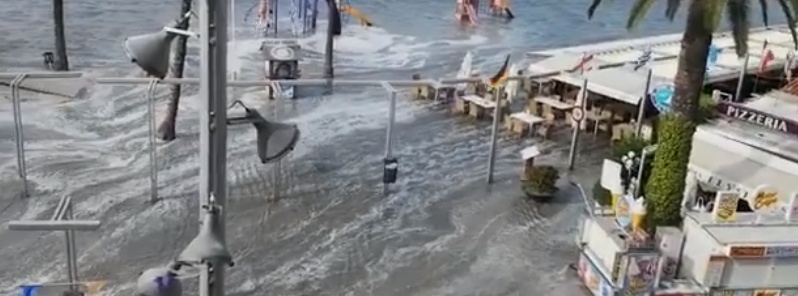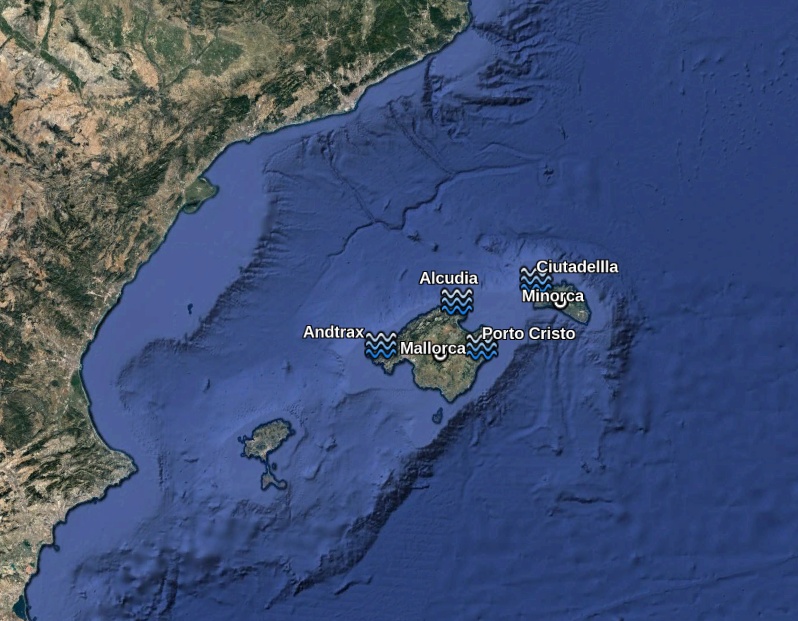Meteotsunami floods islands of Mallorca and Menorca, Spain

A meteotsunami formed in the Mediterranean Sea near the coast of Spain early July 16, 2018, and flooded the coasts of Mallorca and Menorca, Spain’s Balearic islands in the Mediterranean Sea.
According to local media, a wave as high as 1.5 meters (5 feet) hit the islands of Mallorca and Menorca during the early morning hours of Monday, July 16.
The wave hit numerous cities along the coasts of both islands, including the port city of Ciutadella on the west coast of Menorca, flooding beaches, roads, bars and terraces.
Beach chairs, boats and parasols were swept away on both islands as well as historic sailing boat used by the Majorca Island Council which had to be rescued by sailors and brought back to port as it drifted out to sea.
There are no reports of injuries as the beaches were still relatively empty when the event took place.
Markers on the map below show some of the cities affected by the event:


Cities affected by the meteotsunami on July 16, 2018. Credit: Google. Annotation: The Watchers
Meteorological tsunamis or meteotsunamis are rare but hazardous long ocean waves, which have the same frequencies and spatial scales as tsunami waves.
However, they are not related to seismic activity, volcanic explosions or submarine landslides, but to atmospheric forcing: pressure jumps, atmospheric gravity waves, frontal passages, squalls, etc.
.jpg)
.jpg)
Illustration of the meteotsunami generation processes. Numerous atmospheric gravity waves (represented by bubbles) are generated at the interface of unstable and stable atmospheric layer at places of strong wind shear. Air pressure change (a surface manifestation of atmospheric gravity waves) generates long-ocean waves which can be amplified through several processes: (1) Proudman resonance (due to matching of long-ocean waves speed and speed of atmospheric gravity wave); (2) shelf amplification (due to shoaling); and (3) harbour resonance (due to matching of frequency of incoming long-ocean waves and harbour eigenfrequencies). Incoming ocean waves can be amplified more than 100 times before hitting the coast as a destructive meteotsunami (figure taken from Šepić et al., 2015).Credit: IZMIR
Featured image: Meteotsunami hits Spain's Balearic Islands on July 16, 2018. Credit: Virales Mallorca

Commenting rules and guidelines
We value the thoughts and opinions of our readers and welcome healthy discussions on our website. In order to maintain a respectful and positive community, we ask that all commenters follow these rules.